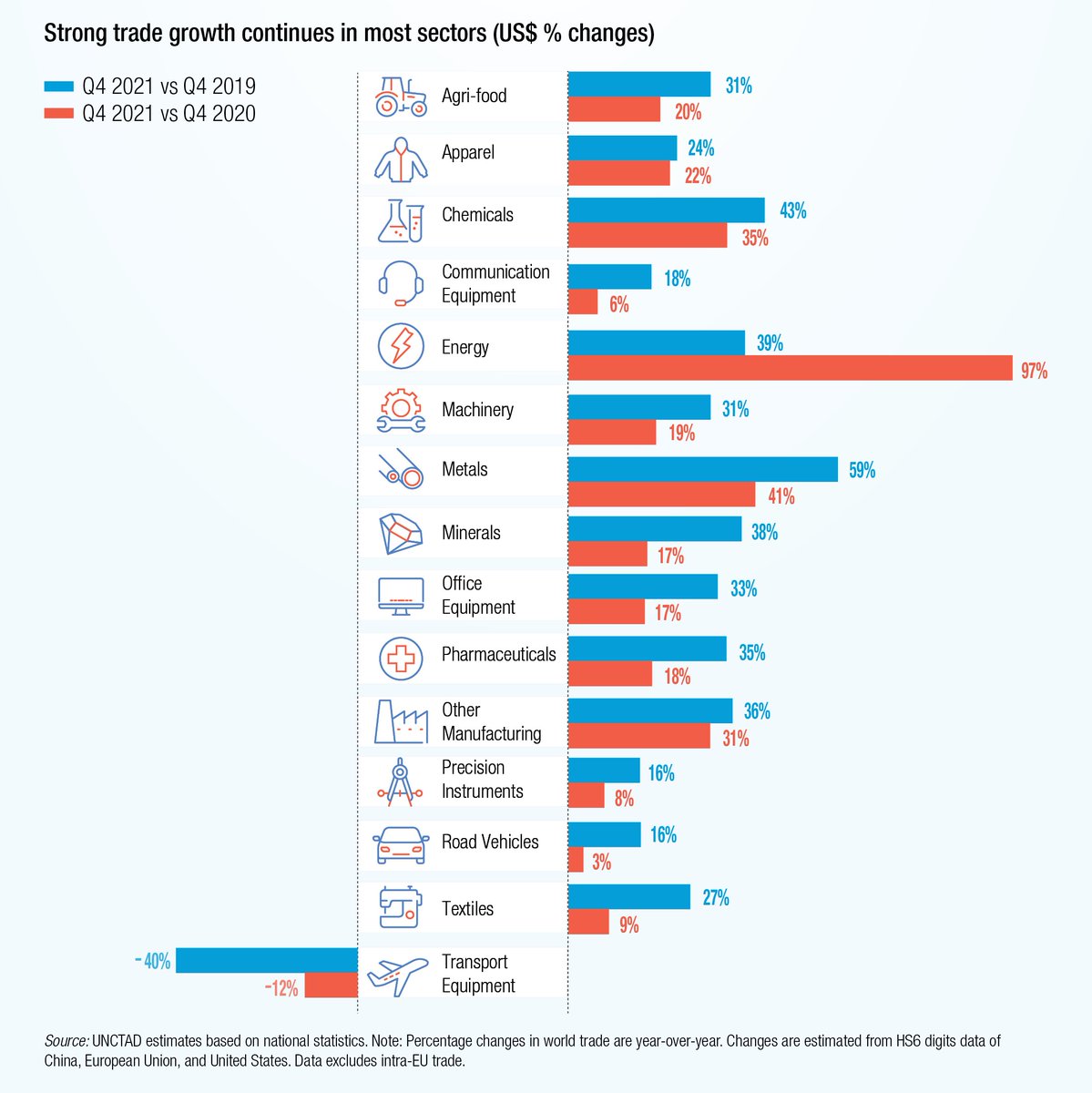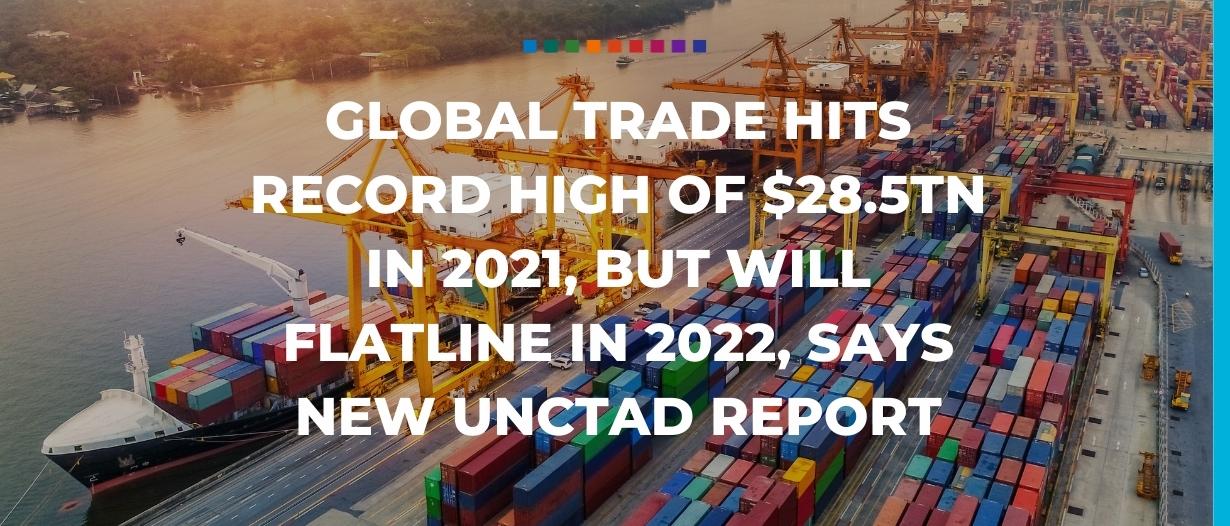A new report has found that the total value of world trade hit a record high in 2021, but is expected to flatline into a sluggish 2022.
The Global Trade Update, published today by the United Nations Conference on Trade and Development (UNCTAD), found that the total value of global trade hit $28.5 trillion in 2021.
Overall, the value of global trade increased 25% on 2020 and 13% on 2019, before the COVID-19 pandemic began.
While most global trade growth took place in H1 2021, progress nonetheless continued – albeit at a slower rate – into H2 2021.
A stellar Q4, or just more inflation?
Among its findings, the report notes that all major trading economies saw imports and exports rise above pre-pandemic levels in Q4 2021, with trade in goods increasing more strongly in the developing world than in developed countries.
After a relatively slow Q3 2021, trade growth picked up again in Q4, when trade in goods increased by almost $200 billion, achieving a new quarterly record of $5.8 trillion.
Exports from developing countries were about 30% higher than during the same period in 2020, compared with 15% for wealthier nations.
Growth was higher in commodity-exporting regions as commodity prices increased, and South-South trade growth was above the global average, with a 32% year-on-year increase.
Also in Q4 2021, trade in services rose by $50 billion to reach $1.6 trillion, just above pre-pandemic levels.
Except for transport equipment, all economic sectors saw a substantial year-over-year increase in the value of their trade during the final quarter of 2021.

However, the report notes that “high fuel prices are behind the strong increase in the value of trade in the energy sector, and trade growth was also above average for metals and chemicals.”
As a result of the global shortage of semiconductors, trade growth in communication equipment, road vehicles, and precision instruments was subdued.
Forecasts for 2022
Going forward, UNCTAD’s latest report indicates that trade growth will slow during the first quarter of 2022.
Positive growth rates are expected for both trade in goods and services, albeit only marginally, keeping trade values at levels similar to that of Q4 2021.
“The positive trend for international trade in 2021 was largely the result of increases in commodity prices, subsiding pandemic restrictions, and a strong recovery in demand due to economic stimulus packages,” says the report.
“As these trends are likely to abate, international trade trends are expected to normalise during 2022.”
Headwinds to trade growth in 2022
Trade growth in 2022 is likely to be lower than expected, given the macroeconomic trends.
The International Monetary Fund (IMF) has revised its global economic growth forecast down by 0.5 points, due to persistent inflation in the US and concerns around China’s real estate sector.
UNCTAD’s report also looks at ongoing logistic disruptions and rising energy prices, saying that “efforts to shorten supply chains and to diversify suppliers could affect global trade patterns during 2022.”
On trade flows, the report projects the trend of regionalisation to accelerate due to trade agreements and regional initiatives, in addition to an “increasing reliance on geographically closer suppliers.”
Moreover, trade patterns in 2022 are expected to reflect the increasing global demand for products that are environmentally sustainable.
However, in a word of caution, the report warns that record levels of global debt will put increasing pressure on debt sustainability, especially when combined with rising inflation.
“A significant tightening of financial conditions would heighten pressure on the most highly indebted governments, amplifying vulnerabilities and negatively affecting investments and international trade flows,” the report notes.























